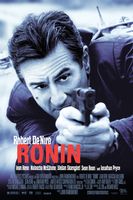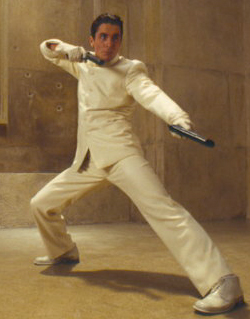|
The Wilson
Combat SDS.
Yes, this is
yet another review of the 1911. I know, you are already holding the
magazine up over your mouth in a polite gesture to hide a very wide
yawn... You've read plenty of 1911 reviews before... or at least you
should have since the 1911 has been around for almost a hundred
years. In fact, the 1911's story goes back over a hundred years ago.
So why am I subjecting you to yet one more 1911 review? Let's go
back to over a hundred years ago and take a look at how all this
started.
In 1904 the
US Army conducted the Thompson-Lagarde Tests. These tests were a
series of almost scientific experiments conducted on live cattle and
cadavers. Pretty much they lined things up, shot them, then examined
the results. They tested a number of calibers and concluded that the
next official military handgun should be no less than .45 caliber.
And this is where we begin. The results of these tests spawned the
1906 Trials where the Ordinance Board finally decided that the Army
wanted a .45 caliber Automatic pistol. They took bids from all the
major gun makers at that time and selected the best three to move on
to the next series of trials. Colt, Savage, and Deutsche Waffen and
Munitions Fabrik. I'm not sure why, but Deutsche Waffen and
Munitions Fabrik dropped out of the running... probably because the
roll marks to put the company name on the gun would require a barrel
34 inches long and small billboard. No matter what the reasons, it
was Colt against the Savage.
Colt already
had a good design to go on by John Moses Browning, the famous Colt
Model 1902. The Savage pistol was, well, we forget what it was. Colt
took the little 1902 which was then chambered for the walloping
.38ACP and told Browning, “We want this, but bigger.” So Browning
gave them the Model 1905 which met the criteria that the US Army
was, ahem, shooting for. Sorry.
These two
pistols, the Savage something or other and the Colt Model 1905 went
head to head with improvements and test trials in a miniature arms
race until 1911 when the US Army finally said “That's enough, we've
simply run out of ammunition. We want the Colt because it looks more
sporty.” Okay, they really didn't say that... what happened during
the last trial was astonishing. The Colt fired 6,000 rounds of ammo
without a single malfunction. The unremembered Savage pistol had
thirty seven. The Colt was clearly the winner. The rest is, as they
say, History. From that moment on, the 1911 has been the pistol of
choice for serious work ever since.
At least
until the 80's when people listened to music by Cindy Lauper and
Culture Club which might have boon what effected the Ordinance
Board's head when they selected the Beretta 92 as a replacement.
Since that time, various military units have decided that decision
was rubbish and they've been going back to the 1911 unit by unit.
Today as I'm writing this, there are many rumors going around that
the military is wanting to adopt another .45 caliber automatic. It's
been a long road, and it looks like it could have been just a great
big beltway.
What's
different about this go around? Well I just learned the other day
that Colt, has finally been sold to the glue factory. Word has it
that General Dynamics, the makers of such fine military hardware as
our M1 Abrams Main Battle Tank, is the one that snagged the pink
slip for the prancing pony. Rumor has it that the big GD is only
interested in part of the Colt company, the military side, with
little interest at all in the civilian side... unfortunately it is
the civilian side that makes the handguns. What will come of this?
We should now by the time you are reading this article.
What makes
all this so remarkable, is that since those early times the 1911 has
been left virtually unchanged. If you were to take a modern made
1911... a brand new one, out of the box, jump in your Delorean
sports car/time machine and go back to any time after the year 1911;
you would have little problem finding someone who could replace a
broken mainspring or firing pin, or give your pistol a crisp trigger
job. I've been sitting here trying to think of things that people
used back in the year 1911 that we still use today... I can think of
only two things at the moment. The ball peen hammer and a hair
brush. You can come up with your own list, but I'm moving on.
What has
changed however, is not really anything design wise. We've made
improvements in material science that allow us to make the old 1911
out of better materials with better metallurgy. For example, we can
now select stainless steel for the gun and carbon fiber for the
grips if we wanted. But like I said, the basic design is pretty much
unchanged.
Another
thing that has changed since then, is that we now have a gentleman
by the name of Bill Wilson. Bill won the title of Pistolsmith of the
Year by the American Pistolsmith's Guild in 2002. He won for good
reasons, chief among them was that he knew how to make the 1911
really run. There have been many excellent, and I do mean truly
excellent gunsmiths out there that know their way around the 1911.
But none of them really have the name recognition that Bill Wilson
has when it comes to parts and performance. And none of them have
built such an empire around a single model of pistol. For example,
if you want to buy a new magazine to feed your 1911 today, you will
probably go out and buy a Wilson Combat magazine. I don't know of
anyone that makes a better one.
Now, let's
talk about this gun I have here with me now, and the reason I am
subjecting you to “Yet Another 1911 Review” or an “YA1911R” for
short. This is the Wilson Combat SDS, or “Stealth Defense System”.
It is... (pausing to find better words and failing to do so) utterly
fantastic. The front strap of the grip frame is checkered with such
precision that it is a swiss watchmaker's fantasy. The machining and
the way all the parts fit together... the overall build quality is
just amazing. Wilson Combat gave the gun a number of custom features
such as a beveled magazine well, the checkering I already mentioned
on the high-cut front strap, flat and checkered mainspring housing,
ultralight hammer and trigger, tritium filled night sights, and
gorgeous checkered wood grips. That would be enough right here, but
Bill Wilson wanted to kick it up a notch. He wanted to give it
something a little extra.
The gun has
a very handsome looking satin-black finish that Bill calls
“Armor-Tuff”. I didn't know much about the finish so I had to look
it up to find out just what it is. I found that Armor-Tuff is
probably the most tedious of finishes that I could ever imagine.
They take the slide (for example) and after it is milled, machined,
and gone over so it's physically perfect according to specs, they
use a very fine grain particle bead blast to scrub the metal and to
prepare the surface and then they dehorn the part. On top of that,
they parkerized it. For any other gun company, they could call it
well and good at this point... and it would be. Most of the guns we
used in World War II were parkerized and that finish did just fine
through the worst of the worst conditions. Wilson Combat only calls
it “ready for the next step” because they only parkerized the things
to provide a bonding surface for the actual Armor-Tuff finish that
you can see. The rest of it is sprayed on very carefully and then
heat cured at only 300 degrees for a longer period of time. Kind of
a Slow Roasting process. Like I said, “tedious”. The result of all
that is what Wilson Combat calls the best protection against oil,
acid, corrosion, and abrasion. They might be right. You can get the
Armor-Tuff finish in Black, Grey, or (my favorite) OD Green. I have
to tell you, the finish looks beautiful.
The whole
gun, the SDS, looks and feels just like what a custom made 1911
should feel and look like. It shows you why the 1911 is just as
amazing today as it was almost a hundred years ago. You can buy
other guns made on different designs, but you can't arguably buy a
better designed gun. Different is just that, it's different. That
doesn't mean better. And as long as Wilson Combat keeps making guns
like this... there will never be a better handgun.
The SDS is
absolutely flawless. It is at the top of the list of all the
handguns I have ever tested when it comes to quality and perfection.
You have all the engineering cleverness of turn of the century
genius John Moses Browning, backed up with space aged material
science, computer controlled machining, and Bill Wilson's exacting
demand for absolute quality. This gun is a mixture of savagery and
shear elegance that you don't see very often... this is an irate 800
pound Gorilla wearing a tailored Armani suit crushing your skull
flat with a velvet and silk bag covering a sledgehammer, who then
drives off in a Bentley R Turbo. This is Al Capone on the cover of
GQ. This is “An Affair to Remember” directed by Quentin Tarantino.
This is the Mormon Tabernacle Choir singing AC-DC's “Thunderstruck”.
You just don't get something like this every day.
There is a
good reason for that... why we don't all have one of these things.
This gun is astonishingly expensive. It is just shy of three
thousand dollars. To give you an idea of how expensive that is, at
the shop where I picked this gun up at... for the same cash plus
sales tax, I could have opted for every other single handgun in the
hole bloody place. Or I could have selected a brand new .50 cal
sniper rifle, a sidearm to go with it, ammunition for both, and
still have had enough left over for a pack of targets and earplugs.
This is one expensive pistol.
So how does
it shoot?
The gun came
with a sheet from the factory showing a fifteen yard target and the
pistol's shot group. It was of course simply one ragged hole. Just
what you would expect. My best results mirrored the factory's. The
gun was also perfectly reliable. I especially love the way the
magazine holds the round almost directly in line with the chamber.
This is different from other 1911 type guns which make the round
jump up through the hoop instead of going straight in like a torpedo
into the launch tube. Perfectly accurate and perfectly reliable.
When it shoots, it feels like it is an extension of your will and
you can hit anything with it. Even in total darkness, because the
gun sports really good night sights with pale orange at the rear and
green at the front so you know just where those sights are pointing
and how to line them up. The whole gun is fantastic.
But is it
worth the money? For some, no. It isn't worth it because it is just
too expensive for everyday use. For others who like premium and
exclusive quality, it is. This is why some people even when money is
not a concern choose to drive a Ford Focus and others select a BMW
M3. They prefer the premium and exclusive quality. There are no
plastic bits, no shortcuts or cost saving compromises in this gun.
Bill Wilson wanted to make the ultimate concealable 1911 for those
with taste to truly appreciate it. He succeeded. This isn't just the
best concealable 1911 I've ever fired... this the best 1911 I've
ever fired period. This is the 1911 that John Moses Browning himself
would be carrying today. I can give it no higher recommendation that
that.


Donate
to
ogre@madogre.com via PayPal to support MadOgre.com, or God will kill a kitten.
Copyright
G H Hill 1999-2012
|









